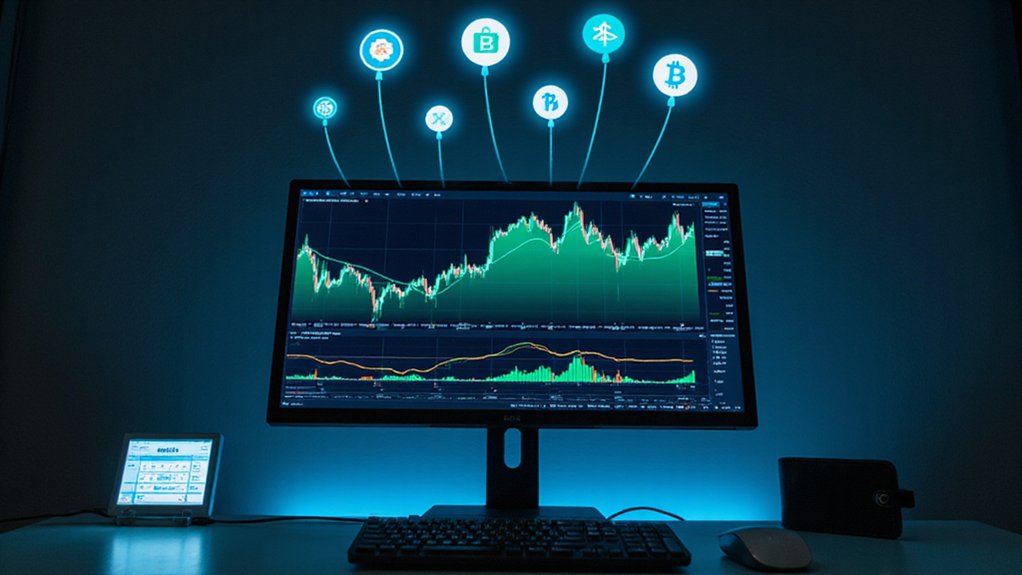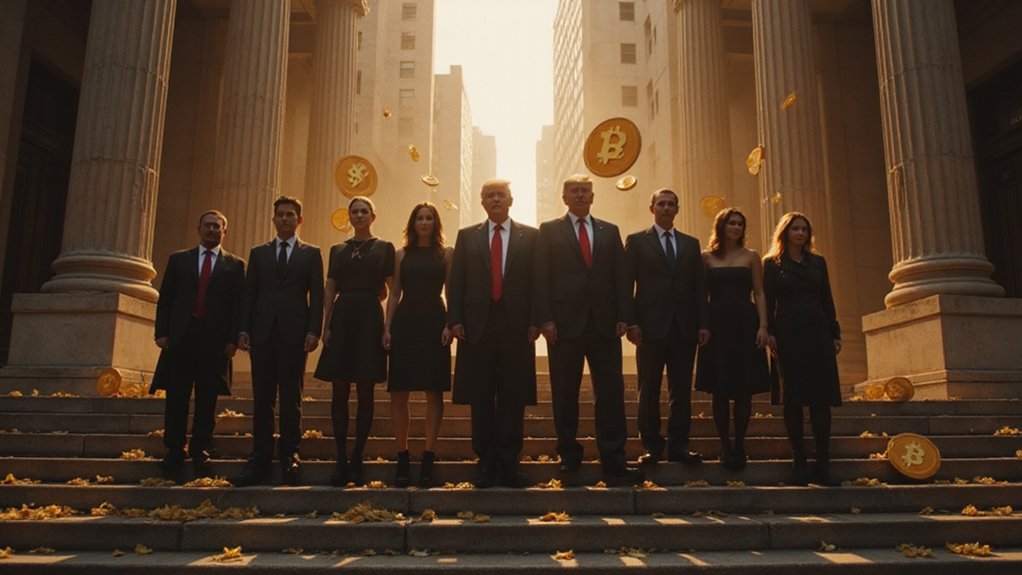BigONE Exchange offers a robust trading ecosystem with spot and derivatives options, featuring leverage up to 100x on perpetual contracts. This Seychelles-registered platform supports over 140 digital assets with competitive 0.1% fees for makers and takers alike. Security-conscious traders might appreciate its cold storage solutions and 100% verified reserves, though reports of lackluster customer support warrant consideration. A closer examination of its six investment services and Kazakhstan-approved operations reveals additional institutional dimensions.

A labyrinth of trading possibilities awaits users at BigONE Exchange, a Seychelles-registered platform that has steadily climbed the ranks of global cryptocurrency exchanges since its 2017 inception.
With operations also established in the Netherlands, the exchange has secured In-Principle Approval from Kazakhstan’s Astana Financial Services Authority, positioning itself among the top three crypto exchanges in the emerging Central Asian market—though American traders must seek their fortune elsewhere due to regulatory constraints.
The platform’s arsenal includes spot trading and derivatives with leverage options that would make traditional brokers blush: up to 100x for perpetual contracts, 10x for margin trading, and a more modest 3x for ETFs.
BigONE’s leverage arsenal shatters traditional boundaries, offering traders a daredevil’s playground with 100x perpetuals and multi-tiered risk profiles.
Traders can deploy market, limit, and trigger orders across more than 140 digital assets—from stalwarts like Bitcoin and Ethereum to the canine-inspired DOGE—with no minimum deposit required (though order sizes typically start at 10 units). The exchange also offers algorithmic solutions through its grid trading capabilities, allowing investors to automate their strategies with custom parameters.
Security-conscious users will appreciate BigONE’s cold storage solutions and 100% asset reserves verified through Proof of Reserves—a welcome transparency in an industry where customer funds occasionally vanish into the ether.
The multi-assets trusteeship and shared exchange architecture further buttress the platform’s defenses against digital marauders.
Unlike HTX Exchange which boasts a massive daily volume of $4 billion across 700+ cryptocurrencies, BigONE operates on a more modest scale but with similar security principles.
The fee structure presents a straightforward 0.1% for both makers and takers, which, while not industry-leading, remains palatable.
Withdrawal limits correlate with KYC completion: verified users can move up to 100 BTC daily, while the unverified face the digital equivalent of house arrest.
Beyond trading, BigONE offers six investment services including staking programs for passive income generation.
The platform’s multi-platform accessibility and demo account functionality allow neophytes to hone their skills before risking capital.
Customer support, while lacking the reassuring human voice of a call center, remains accessible through tickets and social media—adequate for most queries, provided one’s patience rivals that of a Zen master. However, according to user experiences, the support is almost nonexistent and has been reported as problematic for several years.
Frequently Asked Questions
What Are Bigone’s Withdrawal Fees Compared to Other Exchanges?
BigONE’s withdrawal fees stand competitively against industry standards, with Bitcoin fees at 0.0005-0.001 BTC compared to the industry average of approximately 0.0008 BTC.
While not revolutionizing the fee landscape (what exchange does these days?), BigONE maintains a respectable position among its 800+ competitors.
Their fixed fee structure—independent of withdrawal amounts—offers predictability, though as with all exchanges, fees remain subject to those inevitable “market condition” adjustments that exchanges so conveniently deploy.
Does Bigone Offer a Mobile App for Trading?
Yes, BigONE offers mobile applications for both iOS and Android platforms, enabling users to trade on the go.
These apps feature real-time market data, professional charting tools, and extensive trading capabilities.
Downloaded over 100,000 times on Google Play alone, the mobile interface maintains parity with the web platform while providing intuitive navigation.
The apps support multiple languages and include the full spectrum of trading options—spot, margin, and futures—with 24/7 multilingual customer support available.
How Does Bigone Verify User Identity During Registration?
BigONE employs a two-tiered KYC verification system.
Basic KYC requires submission of country details, full name, ID documentation (with uploaded photos of government IDs), and facial recognition authentication—including video recording with specific actions to confirm liveness.
Advanced KYC, completed via the mobile app, involves additional verification steps.
This hierarchical approach imposes different withdrawal limits (50 BTC daily for Basic, 100 BTC for Advanced) and trading restrictions, all while maintaining compliance with global AML requirements.
What Countries Are Restricted From Using Bigone Exchange?
BigONE Exchange explicitly restricts access for users in the United States, Iran, and Iraq—a triumvirate of exclusion based on varying regulatory considerations.
Additionally, the platform withholds services from any countries under international sanctions (a somewhat fluid category, depending on the geopolitical climate).
This geographical limitation reflects the complex regulatory landscape of cryptocurrency exchanges, which must navigate a patchwork of international compliance requirements while maintaining operational viability in their permitted markets.
How Responsive Is Bigone’s Customer Support Team?
BigONE’s customer support presents a mixed bag of responsiveness—offering 24/7 availability through email and ticket submissions, yet delivering inconsistent results.
While their infrastructure appears adequate on paper, user experiences tell a more nuanced tale: some report timely resolutions, while others lament protracted wait times and persistent issues despite multiple follow-ups.
The ticket-based system functions, but network dependencies and technical complexities occasionally transform simple queries into drawn-out correspondence marathons—a familiar plight for crypto exchange users everywhere.









